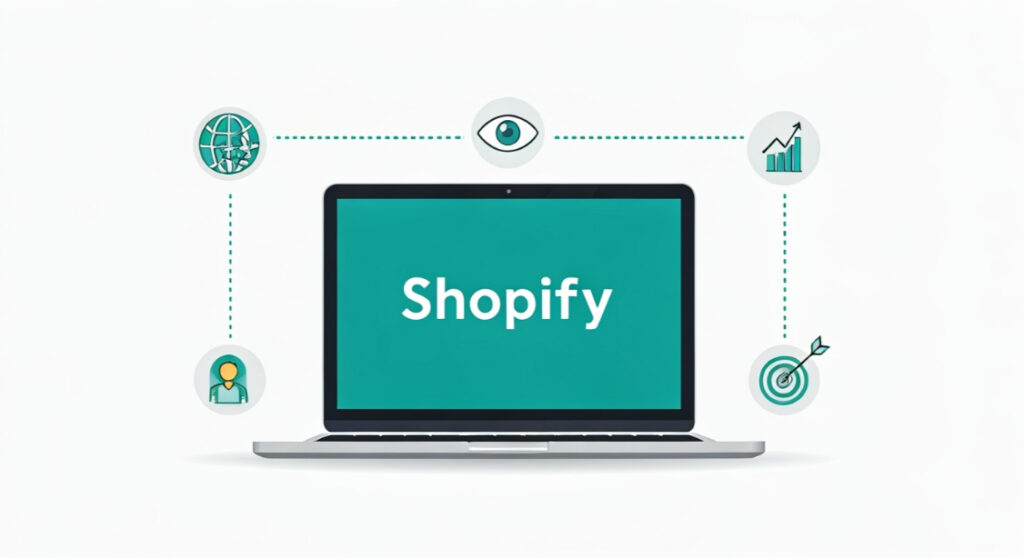Boost Your Store: Edit Homepage SEO on Shopify


Want more organic traffic? Learn how to edit homepage SEO Shopify settings like title tags, meta descriptions, and headings to rank higher on search engines.
Boost Your Store: Edit Homepage SEO on Shopify
Introduction: Your Homepage, Your Digital Storefront, Your SEO Opportunity
Understanding the Importance of Homepage SEO
- First Impressions Matter: Your homepage often sets the tone for the entire customer experience. A well-optimized homepage that loads quickly and provides relevant information keeps visitors engaged.
- Search Engine’s Primary Entry Point: For many businesses, the homepage is the most authoritative page on the website, making it a primary entry point for search engine crawlers.
- Brand Building: A homepage optimized with relevant keywords and compelling content strengthens your brand identity and helps establish you as an authority in your niche.
- Increased Organic Traffic: By optimizing your homepage for relevant keywords, you can attract more organic traffic from search engines, leading to increased visibility and potential sales.
Essential SEO Elements to Edit on Your Shopify Homepage
1. Page Title (Title Tag)
- Keep it concise: Aim for 50-60 characters.
- Include relevant keywords: Incorporate your primary keyword(s) naturally.
- Brand recognition: Include your brand name, usually at the end.
- Example: “Shop Eco-Friendly Clothing | Sustainable Style Co.”
- From your Shopify admin, go to Online Store > Pages.
- Click on your Homepage (or create one if you don’t have one yet).
- Scroll down to the Search engine listing preview section.
- Click Edit website SEO.
- Edit the Page title field.
- Click Save.
2. Meta Description
- Keep it concise: Aim for 150-160 characters.
- Write a compelling summary: Highlight the benefits of visiting your site.
- Include a call to action: Encourage users to click, e.g., “Shop Now,” “Learn More.”
- Incorporate relevant keywords: Include your primary and secondary keywords.
- Example: “Discover sustainable and stylish clothing at Sustainable Style Co. Shop our eco-friendly collection and make a positive impact on the planet. Free shipping on orders over $50!”
- Follow the same steps as for editing the Page Title (above).
- Edit the Description field.
- Click Save.
3. Heading Tags (H1, H2, H3, etc.)
- Use H1 for the main headline: Clearly state the purpose of your homepage, incorporating relevant keywords. Example: “Welcome to Sustainable Style Co. – Your Destination for Eco-Friendly Clothing”
- Use H2-H6 for subheadings: Organize your content logically and use relevant keywords to describe each section.
- Maintain a hierarchical structure: Use headings in a logical order (H1, H2, H3, etc.) to improve readability and SEO.
4. Image Optimization
- Choose the right file format: Use JPEG for photos and PNG for graphics with transparency.
- Compress images: Reduce file size without sacrificing quality using tools like TinyPNG or ImageOptim.
- Use descriptive file names: Before uploading, rename your images with relevant keywords (e.g., “eco-friendly-cotton-t-shirt.jpg”).
- Add alt text: Alt text (alternative text) provides a description of the image for search engines and screen readers. Use descriptive and keyword-rich alt text for all images.
- From your Shopify admin, go to Settings > Files.
- Find the image you want to optimize.
- Click the Alt text link next to the image.
- Enter your descriptive alt text.
- Click Save.
5. Content Optimization
- Write unique, engaging content: Avoid duplicate content and focus on providing value to your visitors.
- Incorporate relevant keywords: Use keywords naturally throughout your content, but avoid keyword stuffing.
- Use clear and concise language: Make your content easy to read and understand.
- Highlight key products or services: Showcase your best-selling or most important offerings.
- Include a call to action: Encourage visitors to take the next step, such as browsing products, signing up for your newsletter, or contacting you.
6. Mobile Optimization
- Use a responsive theme: Choose a Shopify theme that automatically adapts to different screen sizes.
- Optimize images for mobile: Use compressed images that load quickly on mobile devices.
- Ensure readability on mobile: Use clear fonts and avoid small text sizes.
- Test your homepage on different mobile devices: Use Google’s Mobile-Friendly Test to check for any issues.
7. Site Speed Optimization
- Compress images: As mentioned earlier, compressed images are essential for faster loading.
- Use a Content Delivery Network (CDN): A CDN distributes your website’s content across multiple servers, ensuring faster loading times for users around the world. Shopify provides a built-in CDN.
- Minify CSS and JavaScript files: Remove unnecessary characters from your code to reduce file sizes.
- Leverage browser caching: Enable browser caching to allow browsers to store static assets, such as images and CSS files, locally.
- Choose a fast hosting provider: Shopify’s hosting infrastructure is generally fast and reliable.
Monitoring and Tracking Your Homepage SEO Performance
1. Google Analytics
- Organic traffic: The number of visitors who found your website through search engines.
- Bounce rate: The percentage of visitors who leave your website after viewing only one page.
- Time on page: The average amount of time visitors spend on your homepage.
- Conversion rate: The percentage of visitors who complete a desired action, such as making a purchase or signing up for your newsletter.
2. Google Search Console
- Search queries: The keywords and phrases that people are using to find your website.
- Impressions: The number of times your website appears in search results.
- Clicks: The number of times people click on your website in search results.
- Click-through rate (CTR): The percentage of impressions that result in clicks.
- Mobile usability: Any mobile usability issues that Google has detected on your website.